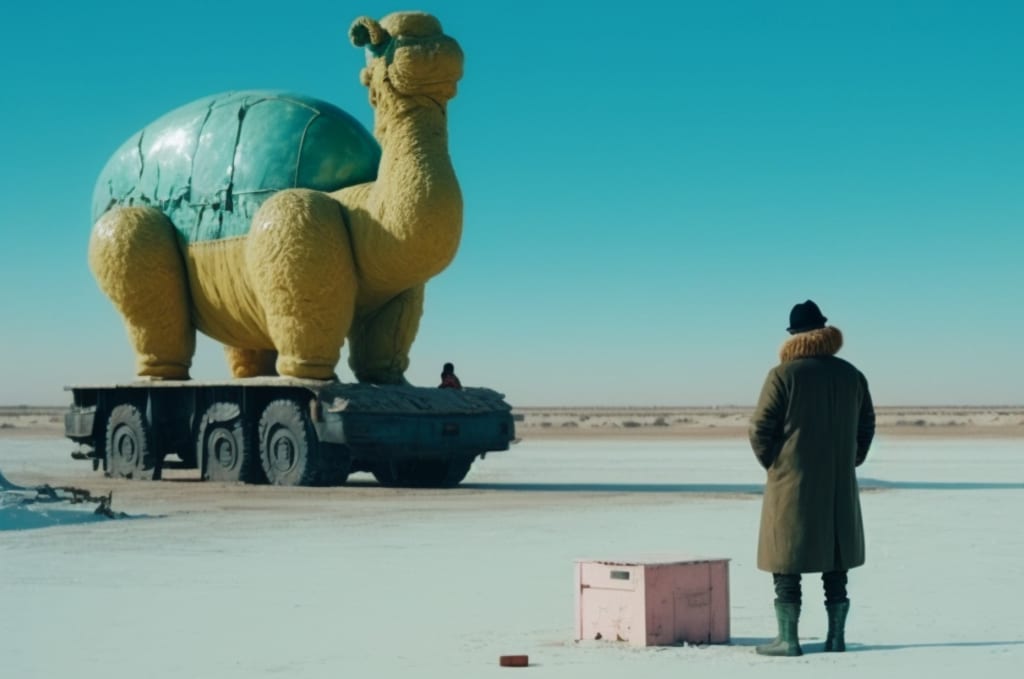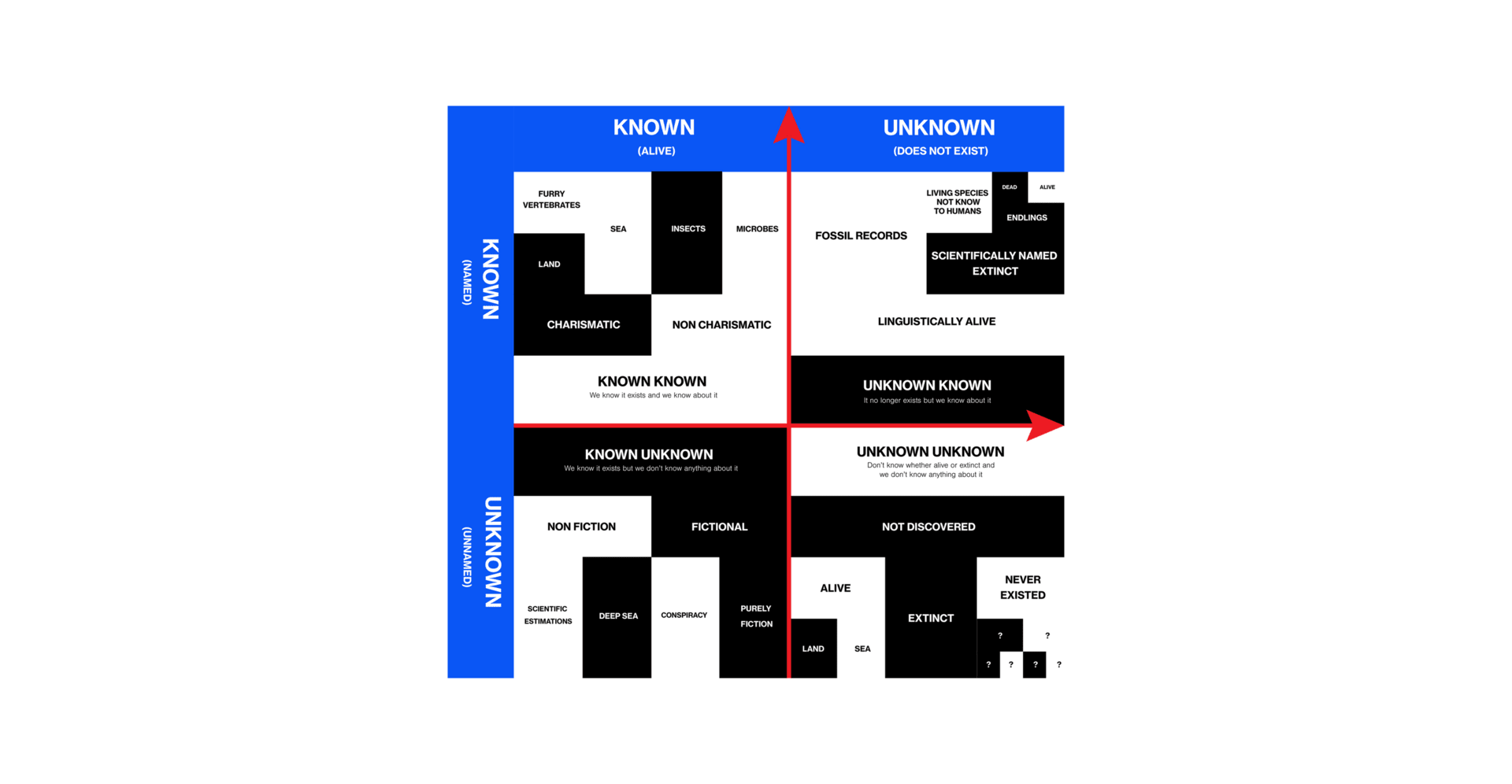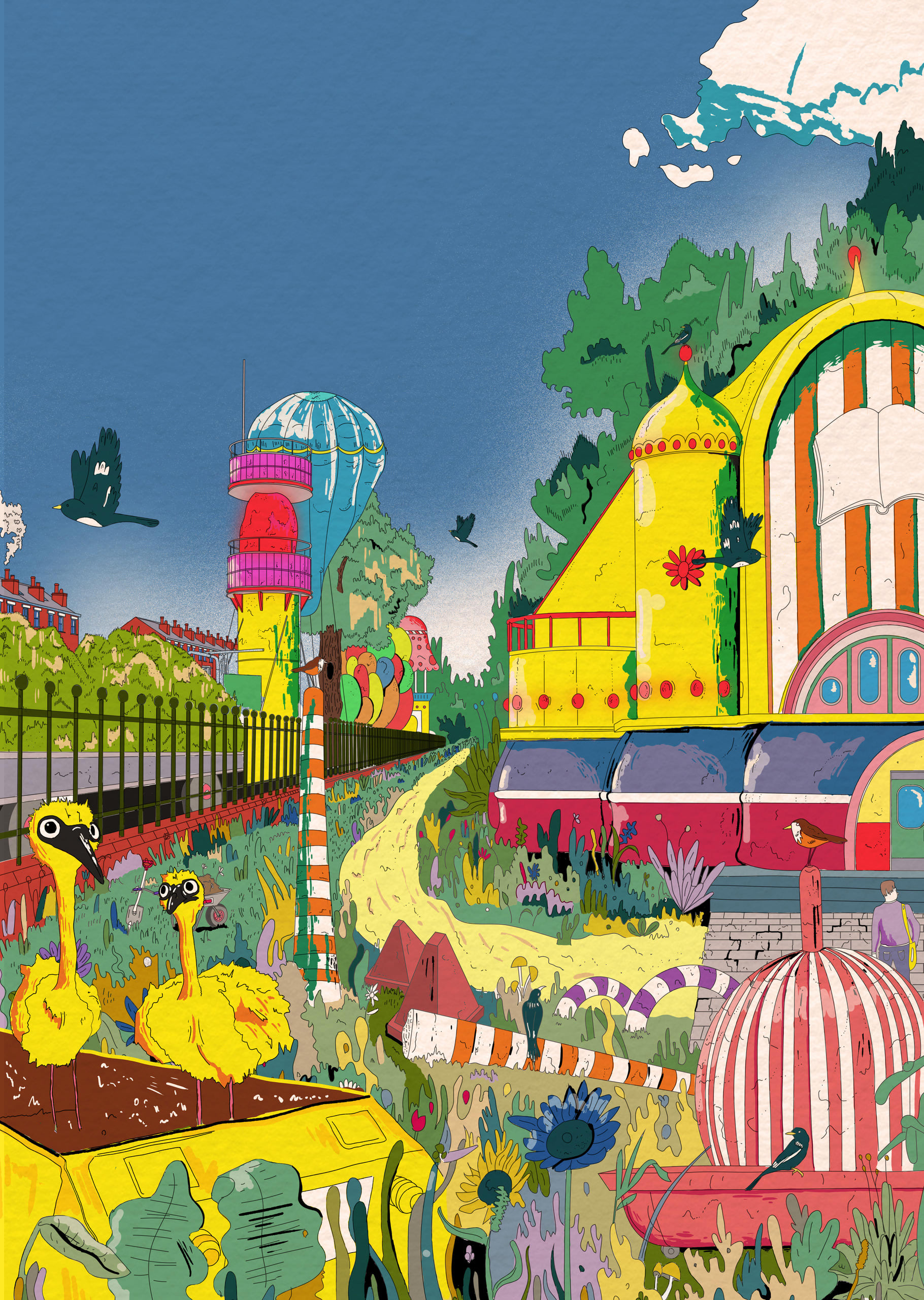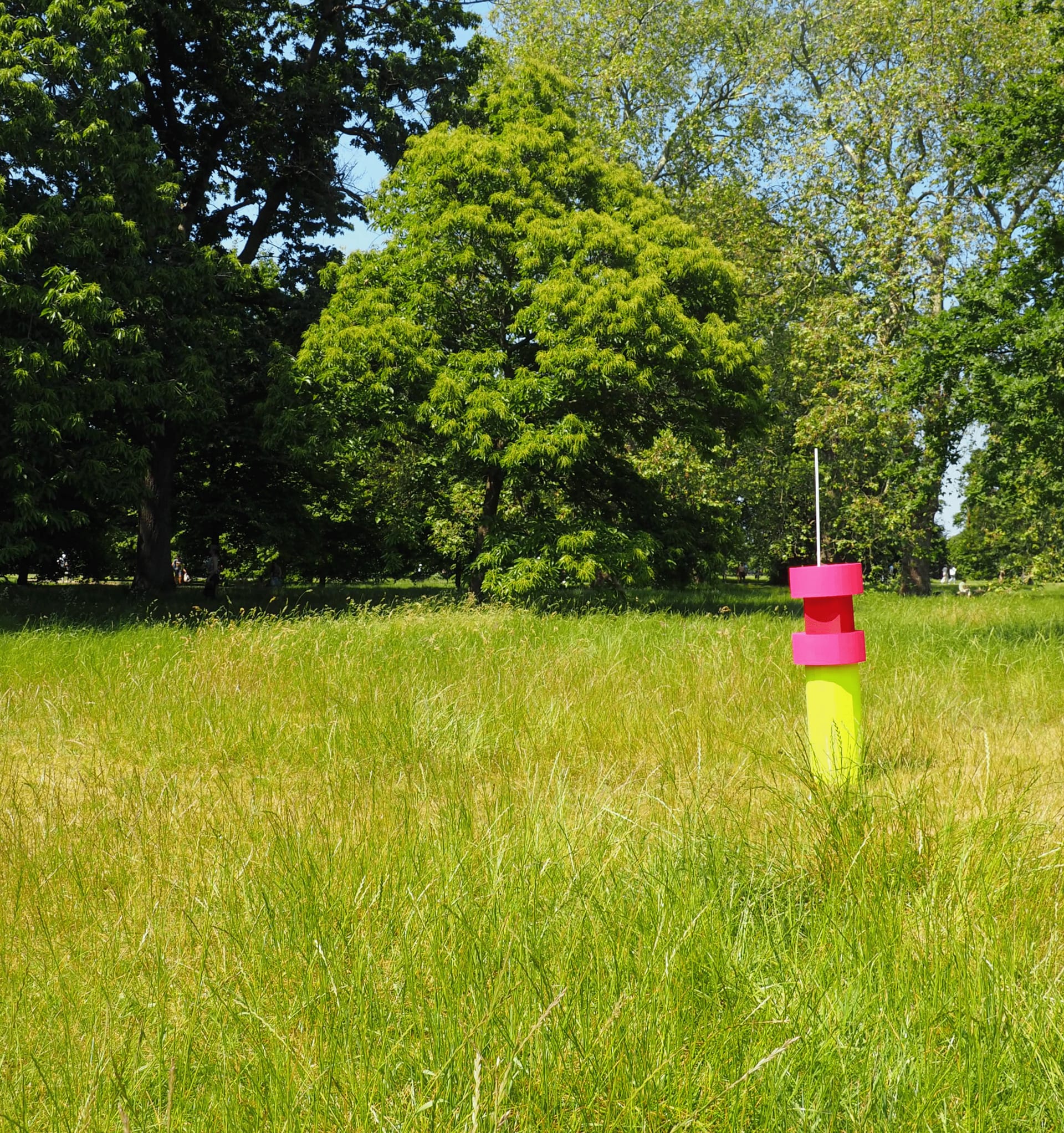The Zoo Came To Tea, offers alternative approaches in the rewilding of children’s language around linguistically extinct non-humans - by a transmedia methodology. The project accepts children’s understanding of nature, and how their belief systems are shaped by the unknown beings that exist within their language. By approaching conservation through this lens of fiction, the full linguistic zoo thus asks how might shared behavioural patterns alter in our approach to the Sixth Mass Extinction.
In 2007, the Oxford Junior Dictionary removed words related to nature. It revealed a list of entries it no longer thought relevant, as the Oxford University press claimed the dictionary must explain the consensus experience of modern childhood. Some deletions included acorn, adder, ash, kingfisher, heron, lark, magpie and otter. While the words introduced included broadband, chatroom, MP3 player and voice mail.
We now live within the sixth mass extinction with 150 species becoming extinct everyday and England one of the most nature depleted countries in the world.
If we lose the language that retains our relations with nature and place the subsequent generations are going to be less adept in dealing with the extinction crisis. As Robert Mcfarlane posits ‘A basic language-literacy of Nature is falling from us. And what is being lost along with this literacy is something perhaps even more valuable: a kind of language-magic, the power that certain words possess to enchant our imaginative relations with Nature and landscape’.
The Zoo Came to Tea uses transmedia artefacts from ,fiction, performance, and reality to tell the narrative of an itinerant convoy who provides linguistic education at four sites of the human induced destruction of the habitat of the magpie, heron, adder and toad. The proposal itself is not the transformation but the catalyst in a new literacy of nature.


















